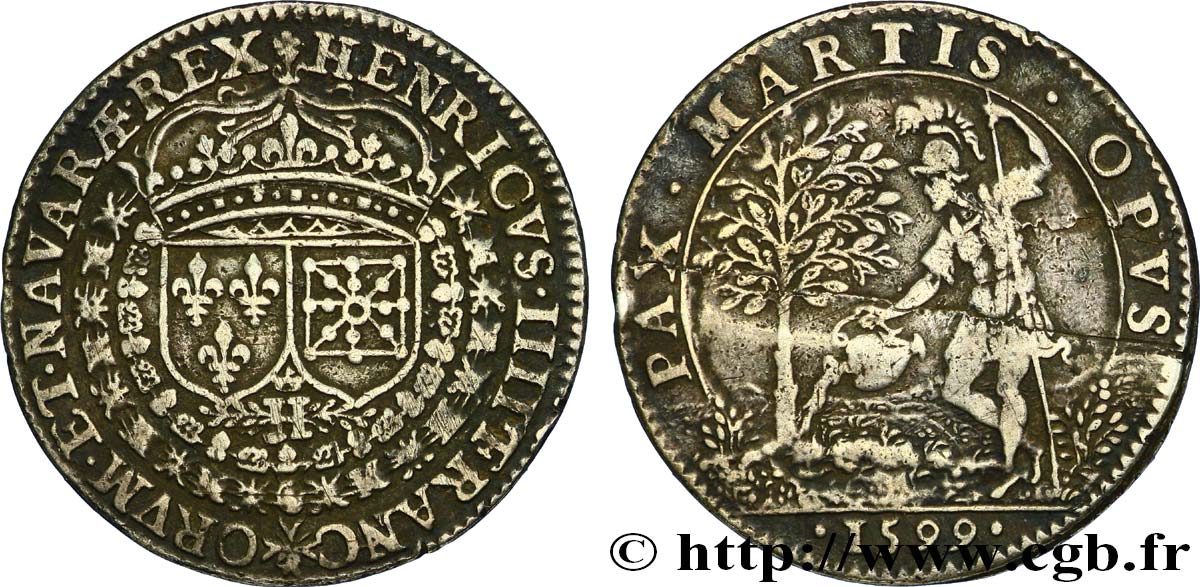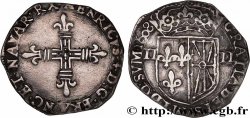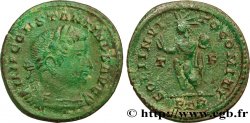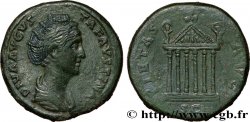fjt_229924 - HENRY IV LE TRAITÉ DE VERVINS 1599
380.00 €
Cantidad
Añadir a su cesta

Tipo : LE TRAITÉ DE VERVINS
Fecha: 1599
Metal: plata
Diámetro: 27 mm
Eje de acuñación: 6 h.
Canto: lisse
Grado de rareza: R2
Comentarios sobre el estado de conservación:
Fèle dans le métal du flan
N° en los catálogos de referencia :
Anverso
Titulatura del anverso: HENRICVS. IIII. FRANC-ORVM. ET. NAVARÆ. REX.
Descripción del anverso: Écus accotés de France et de Navarre sous une large couronne, entourés des colliers de l’ordre de Saint-Michel et du Saint-Esprit.
Traducción del anverso: (Henri IV, roi des Francs et de Navarre).
Reverso
Titulatura del reverso: PAX. MARTIS. OPVS.
Descripción del reverso: Mars debout à gauche, arrosant un olivier, la main gauche sur sa haste ; à l'exergue .1599..
Traducción del reverso: (La paix est l'œuvre de Mars).
Comentario
Jacques De Bie dans son “Histoire métallique de la France”, Paris, 1636, donne l’explication du revers de ce jeton : “Le corps est d’une figure en pied armée à l’antique, représentant un Mars, qui avec un vase remply d’eau arrouse un olivier parroissant desia demy sec : Il tient en sa gauche, une demy-picque dressée au-long de sa hanche qui luy sert d’appuy au bras. Sous l’exergue : MDXCIX. marque assez precise, pour insinuer dans la mémoire de la postérité les utilitéz qu’apporta la paix entre deux monarques les premiers de la chrestienté”. De Bie fait allusion ici au traité de Vervins signé en 1598.
Jacques De Bie in his “Histoire métallique de la France”, Paris, 1636, gives the explanation of the reverse of this token: “The body is a full-length figure armed in the antique style, representing a Mars, who with a vase filled with water waters an olive tree appearing half-dry: He holds in his left, a half-spike raised along his hip which serves as a support for his arm. Under the exergue: MDXCIX. a fairly precise mark, to insinuate in the memory of posterity the usefulness that peace brought between two monarchs, the first of Christianity”. De Bie is alluding here to the Treaty of Vervins signed in 1598
Jacques De Bie in his “Histoire métallique de la France”, Paris, 1636, gives the explanation of the reverse of this token: “The body is a full-length figure armed in the antique style, representing a Mars, who with a vase filled with water waters an olive tree appearing half-dry: He holds in his left, a half-spike raised along his hip which serves as a support for his arm. Under the exergue: MDXCIX. a fairly precise mark, to insinuate in the memory of posterity the usefulness that peace brought between two monarchs, the first of Christianity”. De Bie is alluding here to the Treaty of Vervins signed in 1598








 Informar de un error
Informar de un error Imprimir la página
Imprimir la página Comparte mi selección
Comparte mi selección Haz una pregunta
Haz una pregunta Consignar / vender
Consignar / vender
 Descriptivo
Descriptivo













